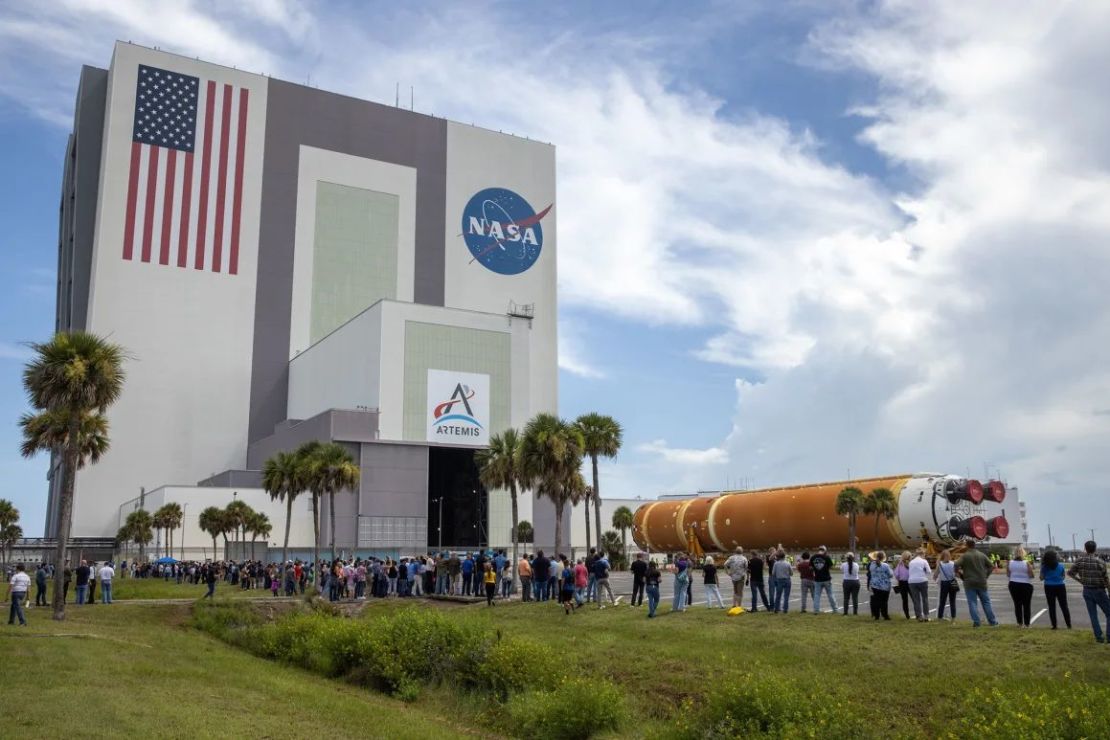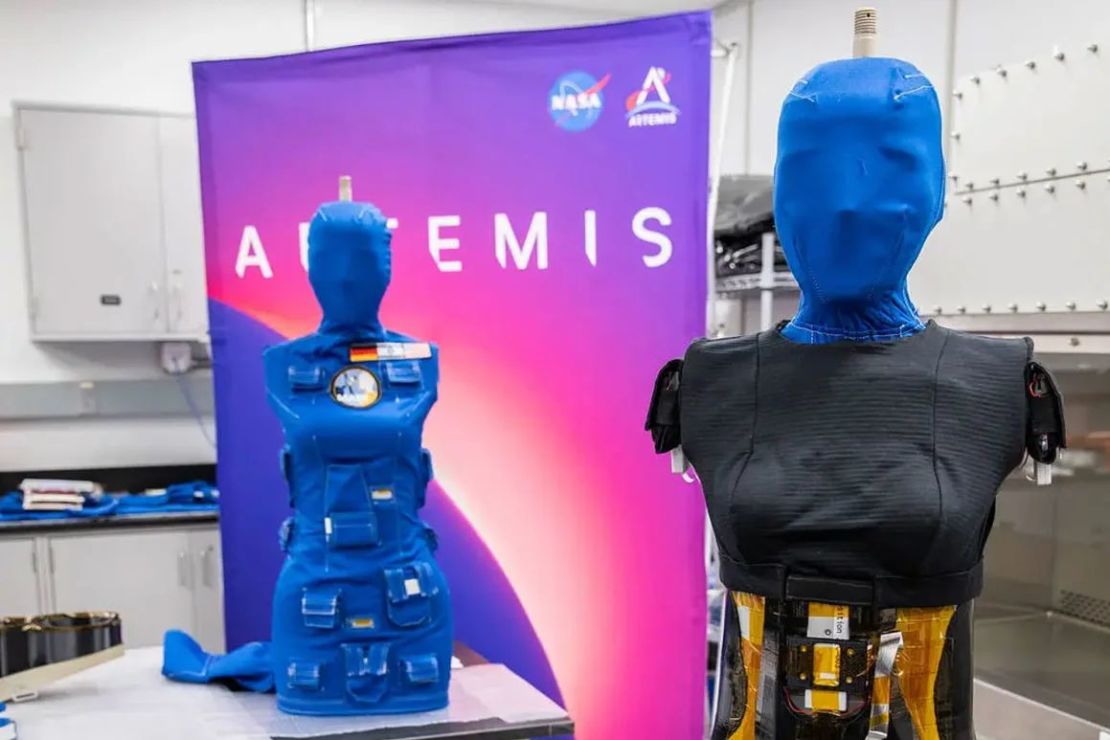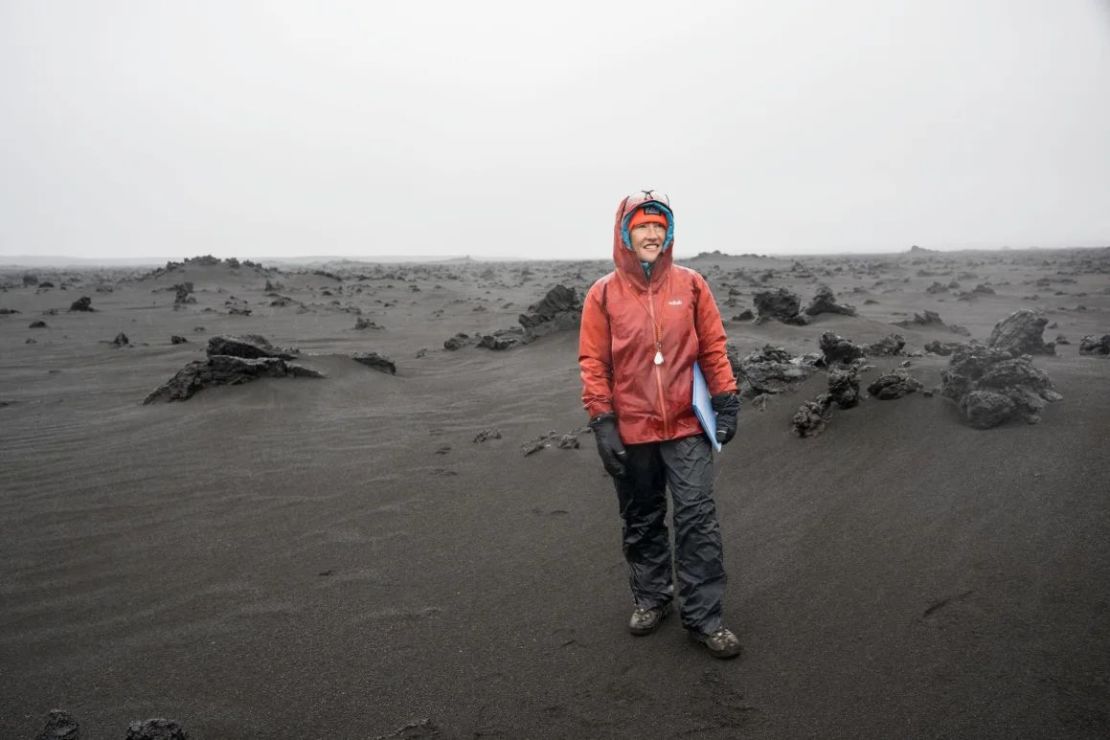(CNN) –– As NASA’s Artemis 2 mission approaches, sending four astronauts around the moon next year, a new study reveals how well the Orion spacecraft can protect the crew.
The findings are based on data from Artemis I, a 25-day trip around the moon that returned in late 2022. On that mission, the Orion capsule, which followed a similar path to the one Artemis II will take, was uncrewed, but it brought special non-human guests.
Two of them, called trunks, are models. Helga and ZoharIt traveled on board as a test to analyze how much radiation astronauts would be exposed to during their trip to the moon. The mannequins were made of materials that mimicked a person’s soft tissue, organs and bones, and like the spacecraft, included detectors to track radiation exposure along the way.
Now, scientists have released the first results after studying the detector data, which were published Wednesday in the journal natureThe results show that the shielding technology used in the spacecraft was effective in mitigating the radiation it was exposed to during the flight.
“The Artemis 1 mission represents a crucial step in advancing our understanding of how space radiation affects the safety of future manned missions to the Moon,” Serge Vaquer Araujo, ESA’s space medicine team leader, said in a statement.
Araujo was not involved in the study, but the European Space Agency contributed five mobile dosimeters to measure radiation throughout the Orion spacecraft.
“We gained valuable information about how space radiation interacts with spacecraft shielding, what types of radiation penetrate to reach the human body, and which areas within Orion provide the most protection,” Araujo said.
NASA has been studying the effects of space radiation on human health for decades, since the first manned space missions in the 1960s. Data is also collected periodically from astronauts who spend six months to a year aboard spacecraft.
The station remains in low orbit, which means it is partially protected by the Earth’s magnetic field, as well as a powerful shield built into the orbiting laboratory’s design. The Earth’s magnetic field also prevents cosmic rays from reaching the astronauts.
But for future deep space missions, astronauts will move away from Earth’s protection and will need to rely on heavily armored spacecraft and protective spacesuits.
Long-duration space missions to the moon and Mars will expose astronauts to radiation from cosmic rays, or high-energy particles that travel through space. To get to outer space, astronauts will also have to pass through Earth’s Van Allen belts, two belts of radiation that surround our planet like giant doughnuts, according to a pot.
The researchers said that sensors built into the Orion capsule captured continuous radiation data during the round trip from Earth to the moon for the first time. Although some data exists from the Apollo missions, it was not collected continuously.
The sensors showed that radiation exposure inside Orion varies greatly depending on the location of the detectors, according to the study authors.
As Orion passed through the Van Allen Belts, data showed that the most protected areas, such as the capsule’s “storm shelter,” provided four times greater protection than the least protected areas. Researchers determined that radiation exposure at these locations remained at a safe level for astronauts to avoid acute radiation sickness.
“The storm shelter is a very tight area used to store supplies for the crew,” Stuart George, lead author of the study and a scientist in the Space Radiation Analysis Group at NASA’s Johnson Space Center, said in an email. “We found that the storm shelter was the most protected area of the vehicle, which is a good thing because it was designed that way.”
Passing through the Van Allen belts was considered similar to the crew encountering space weather.
As the Sun approaches solar maximum (the peak of its 11-year cycle, due this year), it becomes more active, releasing intense solar flares and coronal mass ejections. CMEs are large clouds of ionized gas called plasma and magnetic fields that shoot up from the Sun’s outer atmosphere.

When these explosions target Earth, they can affect spacecraft, satellites, space stations, and even the Earth’s electrical grid.
“This helped us validate our shelter design to protect the crew from energetic solar particle events caused by space weather,” George said.
Exposure to cosmic rays, which may account for most of the radiation astronauts can experience on long-duration spaceflights, was 60% lower on Artemis 1 than on previous missions, including robotic missions to Mars, George said.
The team also noticed a surprise in the findings. As Orion passed through the Van Allen belts, the spacecraft rotated to activate the thruster and make sure it was on the right path. During the rotation, radiation levels inside the capsule dropped by 50 percent because the maneuver put more of Orion’s shielding within the radiation path, George said.
The study authors said the measurements made during Artemis I could guide the design of future human spaceflight missions.

If a solar storm occurs while the Artemis astronauts are in space, it could last for several days.
The storm shelter concept was modified for Artemis II, as the smaller shelter aboard Artemis 1 may not be large enough for the crew to perform normal operations if they had to stay there for an extended period during a solar storm, also known as a solar particle event.
“On Artemis 2, the crew will attach supplies to the less protected wall of the Orion spacecraft,” George said via email.
“This means that during an active solar particle event, the crew will be able to use much more space in the cabin while still being protected from radiation. “It will be really interesting to test that in space, with the crew in the loop.”
the The core stage of the powerful Artemis II rocket It arrived at NASA’s Kennedy Space Center in Florida over the summer, and the Artemis III rocket, scheduled to launch in 2026 and intended to carry a woman and a person of color to the moon’s south pole for the first time, is already being assembled.
Meanwhile, the Artemis 2 crew, which includes NASA astronauts Reid Wiseman, Victor Glover and Christina Koch and Canadian Space Agency astronaut Jeremy Hansen, has arrived at Training in IcelandAlthough they won’t land, the crew will travel 7,402 kilometers beyond the far side of the moon to take images of surface features, such as craters, from orbit.

“The fact that humans are holding a camera as they walk across the moon and describing what they see in language that scientists can understand is a boon to science,” said Kelsey Young, Artemis II lunar science lead and official scientist at NASA’s Goddard Space Flight Center in Greenbelt, Maryland, in a statement.
“This is pretty much what we ask astronauts to do when we take them to these Moon-like environments on Earth.”

“Proud web fanatic. Subtly charming twitter geek. Reader. Internet trailblazer. Music buff.”







More Stories
The final moments of the “Halloween Comet” were captured by the SOHO spacecraft
University of Michigan scientists have discovered what’s inside a black hole
NASA shares the scariest images of the sun in the lead-up to Halloween